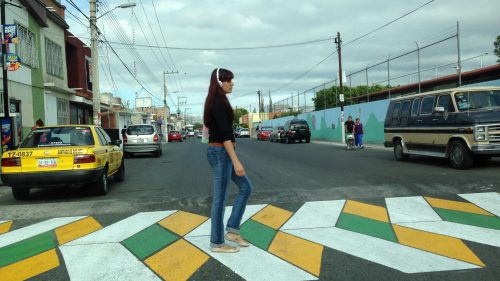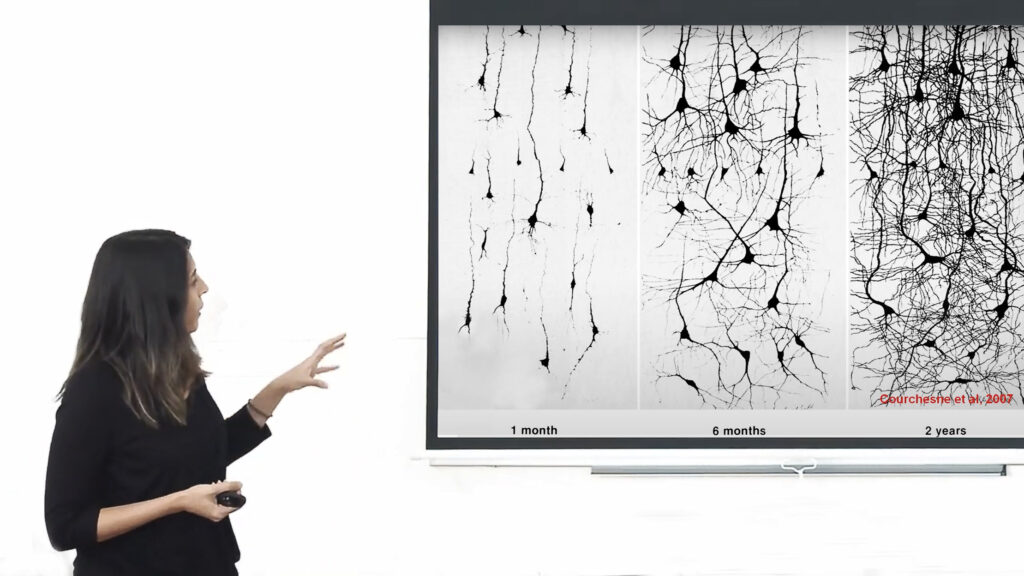The idea of the conscious city makes it opportune to re-visit or, for some, introduce a work of similar aspiration, and much resonance, now in its 40th anniversary year. This is the ‘pattern language’ prepared by architect Christopher Alexander detailing the attributes he observed and considered as contributing to making cities ‘liveable’ (using current parlance). But not just liveable. Alexander actually sought to find and record those city attributes which instil life – within us. This work, produced with colleagues from the University of California Berkeley was published as A Pattern Language in 1977. Its twin, The Timeless Way of Building, detailing the underlying theory, came later in 1979.
Alexander is an intriguing and at times controversial character who has now dedicated some 50 years of research and practice to expanding our every-day ability to realise the promise of the ‘whole’ view – through pattern. In his architectural work he seeks out those spatial patterns, or arrangements, that have a close fit with how we most prefer to live. And as such enrich and give ‘life’ to everything we do. He also works by giving primacy to what we actually feel and know within ourselves about what best achieves those needs. Once defined, he expresses these arrangements into other patterns: a series of ‘templates’ for action so that we can build cities that actually respond to and support these needs.
Alexander explained his long-standing aspiration in an early article, ‘The Bead Game Conjecture’, a reference to Hermann Hesse’s 1943 Nobel Prize-winning novel about the dilemma of synthesising our various knowledge bases into an effective ‘holistic’ approach to everyday demands. As Alexander described it:
It is possible to invent a unifying concept of structure within which all the various concepts now current in art and science can be seen from a single point of view. …in our world, confused and fragmented by specialisation, the conjecture takes on special significance. …we need a bead game; and it is vital to ask whether or not a bead game can be invented.2
This expansive aspiration means Alexander’s work covers a lot of ground, including studies in cognition and the generative patterns found in nature and linguistics (the volume and scope of his writings are exhausting). It also means it is possible to describe his work in a wide variety of ways and from different viewpoints. For this paper the four topics of exploration nominated as of interest for this journal provide a convenient way to structure an introduction to his work.
Philosophy of conscious cities
Early on, Alexander described the task he set himself as a search for ‘good form’. He conceptualised each issue he explored as comprising a set of tensions or forces, with subsequent design solutions being in effect the resolution of those tensions. As he stated: “Forces have a characteristic pattern and the good form [ie. built environment/urban solution] is in equilibrium with the pattern, almost as if it was lying at the neutral point of a vector of a field of forces.”8
Collectively, each ‘good form’ solution can then produce urban environments with the requisite amount of ‘life’ he sought – and which was determined from direct reflective observations of user needs and interactions with the built environment.
His approach at this stage reflects his initial training as a mathematician, an interest in geometry, and then recent advances in computer applications. Alexander’s language, and presumably also his conceptualisation, started to change when he began a liaison with the United States National Institute for Mental Health (NIMH) which was also, at that time, interested in the relationship between human wellbeing and the design of our living spaces. The ‘life’ he seeks is for instance now described as when “…all our [personal] forces can move freely within us.”4 When this does not occur we are likely to exhibit “a tightness about the mouth, a nervous tension in the eyes, a stiffness and a brittleness in the way we walk, the way we move”.4 By correlation, he describes urban spaces that are divorced from such “inner force” needs as essentially “dead”: “The situation is self-destroying…it is continuously creating…inner conflicts…reservoirs of stress which will, unsatisfied, soon well up like a gigantic boil and leak out in some…form of destruction….”.4
The key (or ‘good form’) elements (or ‘patterns’) of city configurations that Alexander went on to define are then those things that will release those tensions or, preferably, not give rise to them in the first place. In effect, the development – and implementation – of an architecture that supports a ‘conscious city’.
Methods of observation and analysis
One of the schisms inhibiting current city-building (and other) practice that Alexander tackled is that between felt and conceptual understandings of what works and what does not in meeting the need for ‘life’. The implications flow down. We now also value each understanding differently and preference one or the other. From the field of biophilia for instance, Stephen Kellert asks why we no longer trust our intuitive knowledge about how we should design something, but rather demand all sorts of empirical evidence before acting. We are the first generation in history he suggests, for example, (with a note of sadness) that requires ‘proof’ that nature is good for us.12
One can see elements of this tension also within the conscious cities Manifesto: a valuing of user experience while at the same time also calling for more empirical back-up. Alexander expressed it as a need to “…think about structure and to feel it simultaneously”.2 But a difficulty in taking up Alexander’s approach is that he has not compiled a neat ‘workbook’ on how to work in this way. One needs to glean advices from his voluminous writings and from observations of others. Here are some (not exhaustive) elements I have found:
A key necessity is “good observation” rather than “inventing”14, and spending more time listening than speaking.15
This requires a “receptive” state of mind, wary of the active ego “always trying to invent,…bring [in] extraneous stuff….”14
It is a “long searching processes”14, and includes end-users of the intended patterns.3
The valuing of felt experience as the measure: “When you first see a pattern, you will be able to tell almost at once … whether it makes you feel good or not: whether you want to live in a world that has that pattern in it … .”4
But also a caution: “…human intuition is a very finely developed process…but on the other hand, not unless it’s educated to do it. You can have all sorts of intuitions about all sorts of trivia.”14
Thus also a need for deep research and “cautious scepticism”: constant checking with others and the posing of matters as questions to get “so deeply into the situation…we…feel, in our own bodies, just which [patterns] need to be there.”6
The approach is essentially phenomenological. Although not really referred to in this way by Alexander, it is a connection now pursued by others.16 Further, although Alexander worked to establish an empirical underpinning to this approach of ‘felt observation’, it has also been criticised as lacking rigour and being too consensual. It is interesting then to see (and as promoted in the Manifesto and this journal) how our new-found ability to map brain processes is now producing such evidential ‘endorsement’ of these approaches. The empirical scientific method has in a sense ‘caught up’ with our inherent processes of “embodied cognition”.9
Drivers for design
The design patterns Alexander defined are not simply patterns of need (which he called patterns of events), nor simply the shapes of rooms, buildings, and urban areas that achieve these needs in the best way. Rather, the two elements (patterns of need and patterns of space) are inherently interlocked. Alexander’s resultant patterns are actually composites that describe this interlocking – in effect a new design entity describing how to generate spaces with close fit to need, able to support and stimulate the associated desired behaviour (and ‘life’).
Referring back to Alexander’s early relationship with the NIMH, such patterns when implemented will result in environments able to “…eliminate the stress cycle, release people’s natural force, and thus make room for positive forces, positive emotions, and positive human interactions to have free play.”5
The patterns describe the essential quality designs need to embody (in whatever configuration or style) to achieve this objective, not actual designs. This gives each an accommodating flexibility. This feature is often mis-read by critics who are used to viewing ‘pattern’ as rigid and dogmatic rather than generative. Alexander’s patterns are more like ‘rules of thumb’; like, for example, how cooking recipes or dress patterns are often actually practiced: neither too casually or too rigidly, with variation to fit each circumstance but still maintaining the intended outcome.
Alexander wrote down and illustrated these composite patterns in a standard easy-to-read format for use by others. A Pattern Language is a compendium of 253 such patterns. They range from the shape of a room to the whole city layout and have catchy titles like: ‘Magic of the City’ (available, and within easy reach, to all); ‘Street Café’ (to relax and watch the world go by); ‘Private Terrace on the Street’ (connecting with passers-by while retaining domestic privacy); and ‘Six Foot Balcony’ (accommodating a table people can sit around). Combined they form a ‘language’ for overall city design.
Design-wise, such patterns:
- comprise a “collective memory of things that work”1, thus alleviating the need to re-discover solutions for every similar problem.
- are democratic, in David Harvey’s ‘right to the city’ sense – end-users are involved in their formulation; and by being easily understood they allow ‘lay’ people to make their own decisions, obviating any need to rely on specialised, often detached, professionals.
- generate co-ordinated outcomes in otherwise complex environments and when singular actions take place over extended periods of time (both being features of city-building).
Making an impact
The reaction of the NIMH to A Pattern Language is not clear. Recent contact asking about this did not receive a reply (understandably given the time lapse), though other advices indicate it was well received, with Alexander’s processes being adopted (and still used) by colleagues involved at the time.17
The book is though a best-seller, having struck a chord amongst ‘lay’ readers. As one reviewer describes, the individual patterns with their evocative titles and illustrations invokes an immediate favourable reaction: “Wow, that’s good. I’d like to live there!”.11 Users are then invariably open to receiving and actioning the information that follows, as in that memorable instruction: “If you want to build a ship, don’t drum up people together to collect wood and don’t assign them tasks and work, but teach them to long for the endless immensity of the ocean.”10
Alexander’s work is cited as a key influence in New Urbanism, and wiki technology was originally devised in part to facilitate a further aspiration – that each pattern be available for on-going improvement informed by user experiences. Others in various fields have also adopted the pattern language approach as providing a new “foundational ecology”.13 These include computer programming, systems thinking, sustainable development, media systems, and education. These interests are now being brought together in a series of multi-disciplinary conferences convened by the Portland Urban Architectural Research Laboratory (PUARL) and the Pursuit of Pattern Languages for Societal Change group (PURPLSOC).
Conclusion
Like the idea of the ‘conscious city’, the work of Christopher Alexander exhibits an intrinsic concern for the human experience in urban environments. He has worked, over considerable time, to develop a process to deliver, from the complexity of city-building, environments that are, in his terms, ‘life-generating’. As such, Alexander’s work is well worth a visit by developing ‘conscious city’ practitioners – on the basis of its own substantial attributes, and now also on the basis of the supportive findings for his work coming from contemporary research within the various, similarly developing, strands of ‘consciousness’ studies.









